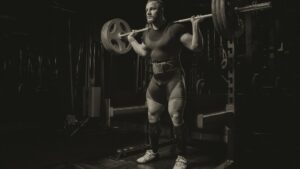The Role of a Belt in Squatting
Support and Stability
A weightlifting belt can offer external support to your core muscles, reducing stress on the lower back. When lifting heavy loads, it may help maintain intra-abdominal pressure, providing a stable base for your lift.
Personal Preference
Whether to wear a belt or not often comes down to personal preference and individual anatomy. Some lifters feel more secure and confident with a belt, while others prefer developing their core strength without one.
Proper Technique First
Before considering a belt, ensure your squatting technique is correct. Proper form, including bracing your core and maintaining a neutral spine, is crucial. A belt should complement your technique, not compensate for poor form.
Decision-Making Process
Gradual Introduction
If you’re contemplating using a belt, start gradually. Begin with lighter weights to adapt to the feel of wearing it and observe how it affects your performance and comfort.
Assess Your Needs
Evaluate whether wearing a belt improves your stability and performance. Some lifters find it beneficial during maximal or near-maximal lifts, while others may not feel a significant difference.
Listen to Your Body
Pay attention to how your body responds. If you experience discomfort or pain while wearing a belt, reconsider its use or reassess your technique.
So.
Wearing a belt when squatting 225 pounds depends on various factors, including personal preference, individual anatomy, and the need for additional support. Experimentation, proper technique, and listening to your body are key in determining whether a belt enhances your squatting experience or not.
Remember, what works for one person might not work for another, so it’s essential to find what suits you best. Ultimately, prioritize proper technique and safety over relying solely on equipment.
Now, if you want to delve deeper into weightlifting techniques and gear, you might find these resources helpful:
Squat University – The Benefits of a Lifting Belt – Explores the advantages of using a weightlifting belt during squats.
BarBend – Do You Need to Wear a Weightlifting Belt? – Discusses the necessity and effectiveness of weightlifting belts in strength training.
T-Nation – Belts, Bracing, and Breathing: The Big Three – Focuses on the relationship between belts, bracing, and breathing techniques in weightlifting.
Feel free to explore these resources further to gain a more comprehensive understanding of weightlifting belts and their role in squatting.


